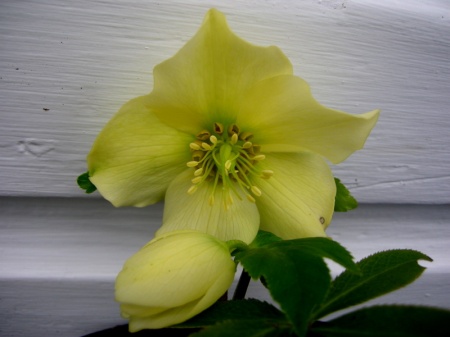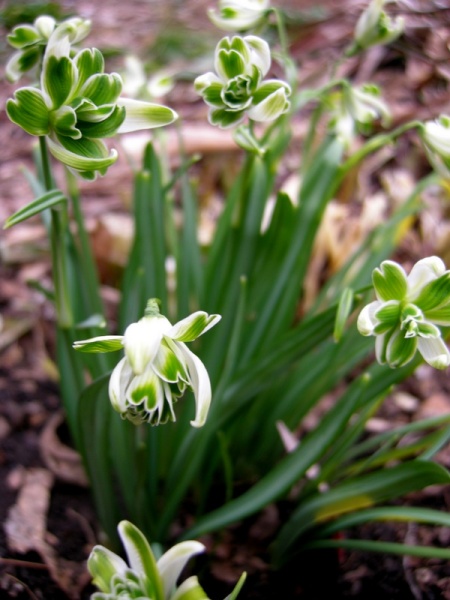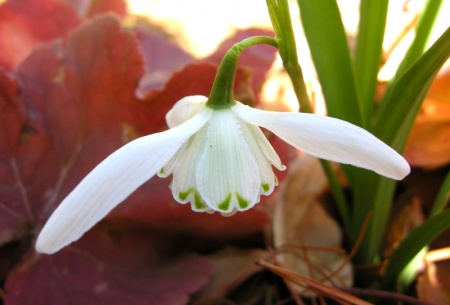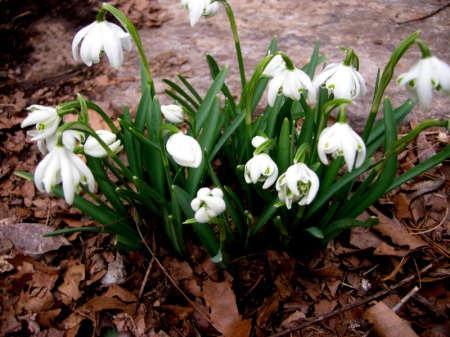Our 2020 Snowdrop Catalogue is on line here, and we are currently taking orders.
 The creative team from Terrain put together this beautiful snowdrop collage after their photo shoot at Carolyn’s Shade Gardens. Before reading further, see if you can guess the name of each snowdrop.
The creative team from Terrain put together this beautiful snowdrop collage after their photo shoot at Carolyn’s Shade Gardens. Before reading further, see if you can guess the name of each snowdrop.
Unbeknownst to us, Carolyn’s Shade Gardens has quite a following at Terrain, the home and garden-related arm of URBN, which also owns Urban Outfitters and Anthropologie and is headquartered in Philadelphia, Pennsylvania, very near us. Members of Terrain’s marketing department contacted us recently to find out if they could visit our gardens and photograph snowdrops. Of course, I am always happy to host anyone who admires snowdrops!
Nursery News: Carolyn’s Shade Gardens is a retail nursery located in Bryn Mawr, PA, specializing in showy, colorful, and unusual plants for shade. The only plants that we ship are snowdrops and miniature hostas. For catalogues and announcements of events, please send your full name, location, and cell number (for back up use only) to carolyn@carolynsshadegardens.com. Click here to get to the home page of our website for catalogues and information about our nursery and to subscribe to our blog.
 Terrain has a charming store in the old Styers greenhouses in Glen Mills, Pennsylvania.
Terrain has a charming store in the old Styers greenhouses in Glen Mills, Pennsylvania.
I asked Terrain’s Brand Writer Megan Parry to describe Terrain for readers who have never experienced it. Here’s what she said:
Terrain is a garden, home, and outdoor lifestyle brand deeply rooted in nature. Our seven store locations are inspired by the idea of merging house and garden to create an experience for the senses, catering to customers with a curated assortment of plants for all seasons, as well as inspired items for the home and garden. Situated in a luxurious indoor-outdoor environment, our on-site nurseries are flanked by cafes and garden terraces, providing the ideal environment to host events and workshops.
Michael and I have visited Terrain’s Glen Mills, Pennsylvania, location many times. We love to walk around the beautiful grounds and eat at the delicious Terrain Cafe. Terrain has a new location in Devon, PA, as well as stores in Maryland, Connecticut, and California. I have even written a blog post about visiting the Longwood Gardens orchid show and eating at Terrain to cure cabin fever. To read it, click here.
.
 The Terrain Cafe not only has delicious food, but it is also housed in a scenic and beautifully decorated greenhouse.
The Terrain Cafe not only has delicious food, but it is also housed in a scenic and beautifully decorated greenhouse.
After their visit, the Terrain team composed a blog post about my interest in snowdrops and featuring the collage at the top of the post. To read their post, click here. You can discover if you correctly identified the six snowdrops in the collage and find out more information about each variety. To end this post, I will show you some close ups of the snowdrop varieties selected for the collage.
.
 Number One is ‘Viridapice’. ‘Viridapice’ is the banner at the top of my website/blog.
Number One is ‘Viridapice’. ‘Viridapice’ is the banner at the top of my website/blog.
.
 Number Two is ‘Spindlestone Surprise’.
Number Two is ‘Spindlestone Surprise’.
.
.
 Number Four is the snowdrop species Galanthus elwesii, also known as the giant snowdrop. Its shape and markings are variable. This collage shows some of the many forms it has taken in our garden.
Number Four is the snowdrop species Galanthus elwesii, also known as the giant snowdrop. Its shape and markings are variable. This collage shows some of the many forms it has taken in our garden.
.
.
 Number Six is ‘Lady Beatrix Stanley’.
Number Six is ‘Lady Beatrix Stanley’.
.
Thank you to Cat, Adelyn, Laura, and Megan from Terrain for making this such a fun experience for us. You mentioned coming back later in the season, and you are most welcome!
Carolyn
Nursery Happenings: You can sign up to receive catalogues and emails about nursery events by sending your full name, location, and cell number (for back up contact use only) to carolyn@carolynsshadegardens.com. Subscribing to my blog does not sign you up to receive this information. Please indicate if you will be shopping at the nursery or are mail order only.
Carolyn’s Shade Gardens is a local retail nursery in Bryn Mawr, Pennsylvania, U.S., zone 6b/7a. The only plants that we mail order are snowdrops and miniature hostas and only within the US.
Facebook: Carolyn’s Shade Gardens has a Facebook Page where I post single photos, garden tips, and other information that doesn’t fit into a blog post. You can look at my Facebook page here or click the Like button on my right sidebar here.
Notes: Every word that appears in orange on my blog is a link that you can click for more information. If you want to return to my blog’s homepage to access the sidebar information (catalogues, previous articles, etc.) or to subscribe to my blog, just click here.



















 ‘Rosemary Burnham’ is a virescent snowdrop with a solid green inner mark and elegant green stripes completely covering the outer segments.
‘Rosemary Burnham’ is a virescent snowdrop with a solid green inner mark and elegant green stripes completely covering the outer segments.


















































































































